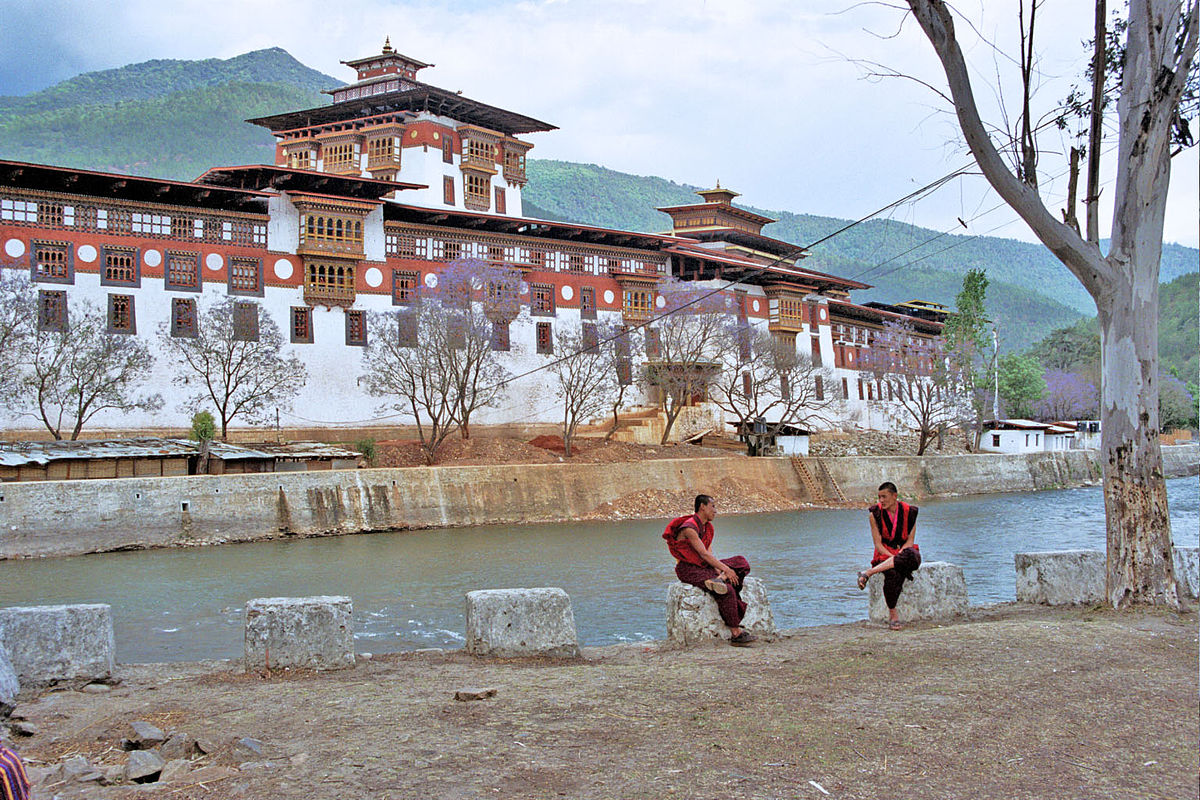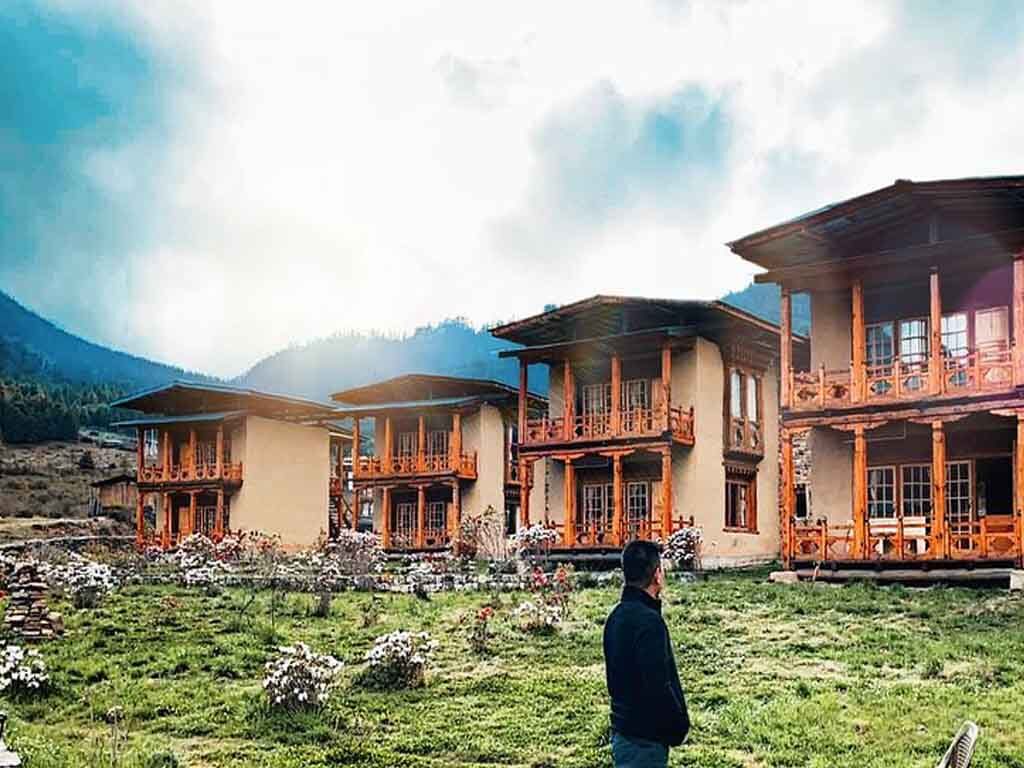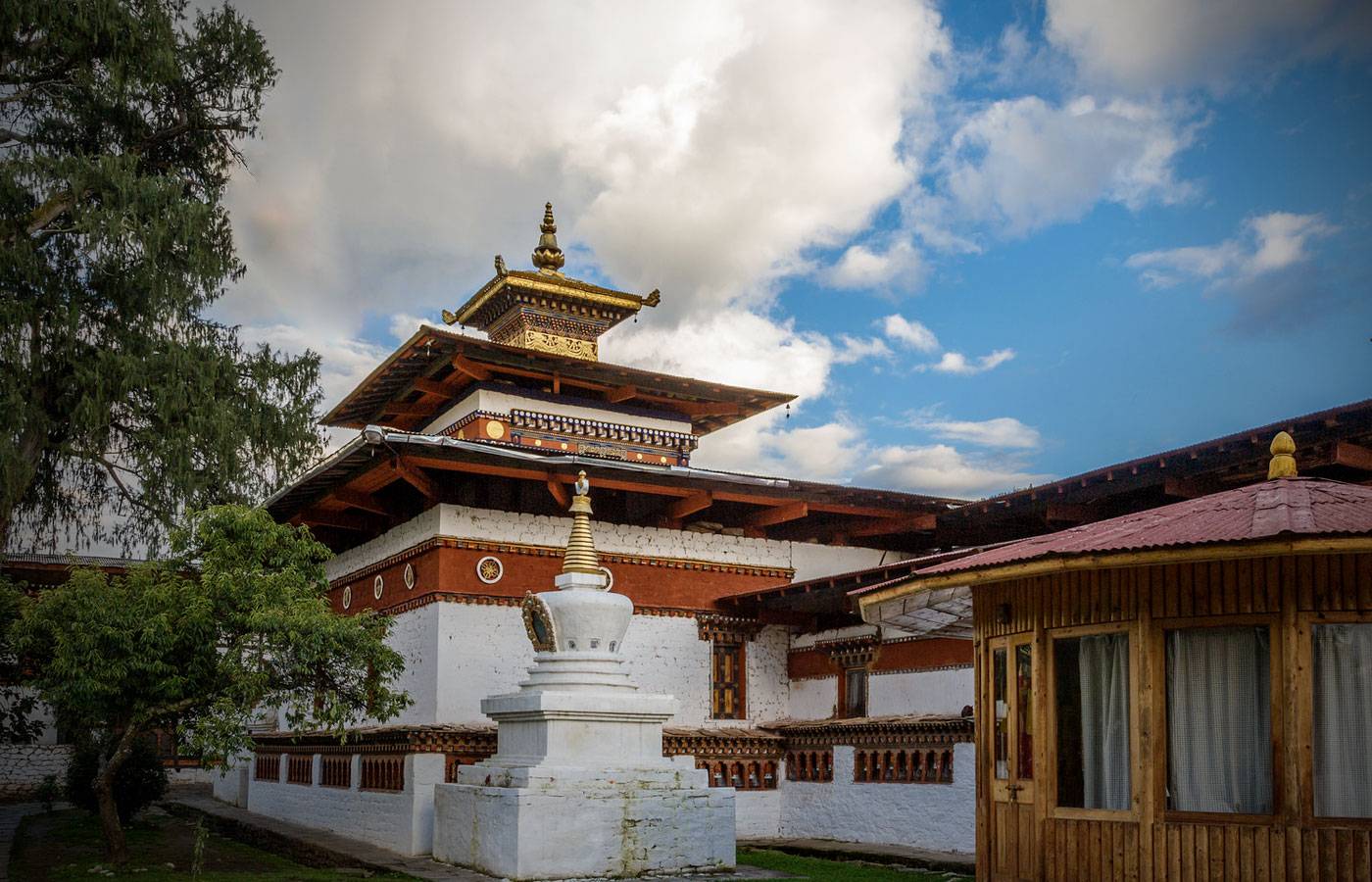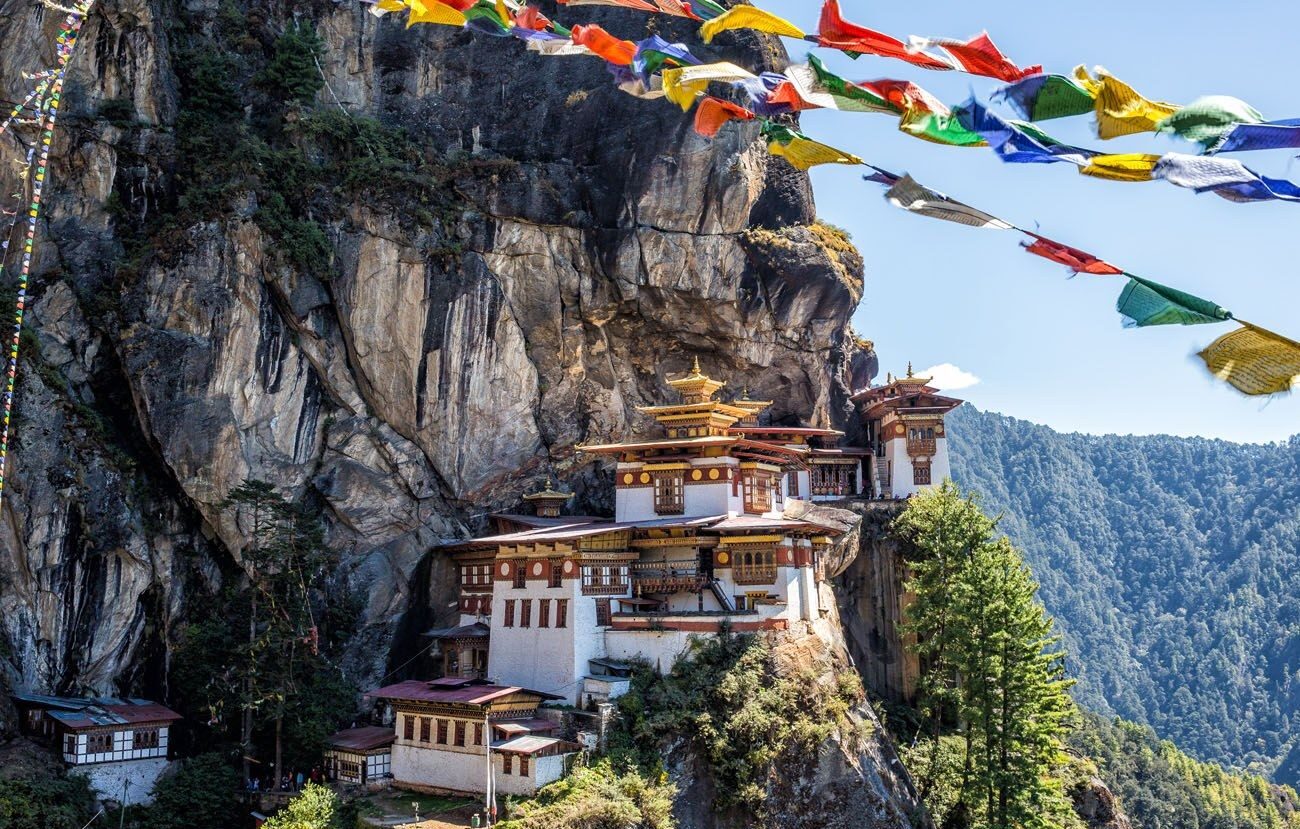Introduction
Bhutan, nestled in the eastern Himalayas, is renowned for its stunning natural landscapes, rich cultural heritage, and the happiness of its people. Traveling to Bhutan in December offers a unique experience, with cool and pleasant weather and clear skies, making it an ideal time to explore the country. This guide details an itinerary for a 7-day, 6-night tour from Kerala to Bhutan, including how to reach Kochi for the departure.

Day 1: Arrive in Paro and Transfer to Thimphu
Upon arrival at Paro International Airport, you’ll be greeted by our representative. The journey begins with a scenic drive from Paro to Thimphu, the capital city. This drive offers picturesque views of the mountains and valleys, setting the tone for the rest of your trip. Thimphu blends cultural richness with modern amenities, making it a fascinating destination. In the evening, stroll through the vibrant streets, visit local markets, and get a feel of the city’s unique ambiance.
Day 2: Exploring Thimphu
Thimphu: As Bhutan’s capital city, Thimphu combines cultural richness with modern amenities. Wander through the vibrant streets, visit the iconic Tashichho Dzong, and explore the National Memorial Chorten for a peaceful experience. The day is dedicated to exploring some of Thimphu’s key attractions, including the Tashichho Dzong, a fortress-monastery that houses the throne room and offices of the king. Another highlight is the National Memorial Chorten, a revered Buddhist shrine where locals come to pray and meditate. This day provides a deep dive into the spiritual and cultural heart of Bhutan.
Day 3: Thimphu to Punakha

Punakha: Punakha, known for its dzong situated at the confluence of rivers, offers a mild climate in December. Explore the Punakha Dzong and enjoy the natural beauty surrounding this tranquil location. The journey to Punakha includes a drive over the Dochu La Pass, which offers stunning panoramic views of the Himalayas. In Punakha, visit the magnificent Punakha Dzong, known for its stunning architecture and serene location at the confluence of the Pho Chhu and Mo Chhu rivers. The dzong is also the winter residence for Bhutan’s central monastic body.
Day 4: Punakha to Phobjikha Valley

Phobjikha Valley: The Phobjikha Valley is a winter haven for the rare Black Necked Cranes. In December, witness these majestic birds against the backdrop of a stunning landscape, experiencing the unique wildlife and peaceful ambiance. The Phobjikha Valley, also known as Gangtey, is a stunning U-shaped glacial valley. This area is renowned for being the winter home of the Black Necked Cranes, which migrate here from Tibet. The valley is also home to the Gangtey Monastery, offering breathtaking views and a tranquil environment.
Day 5: Phobjikha Valley to Paro

After breakfast, depart for Paro. Upon arrival, check into your hotel and prepare for a day of exploration. Visit Kyichu Lhakhang, one of Bhutan’s oldest and most sacred temples, steeped in rich history and spiritual significance. Later, explore the historic Paro Dzong and the National Museum of Bhutan, which provides insights into Bhutanese culture and history. Paro is also known for its picturesque landscapes and traditional Bhutanese architecture.
Day 6: Hike to Tiger’s Nest Monastery

The highlight of your trip, a hike to the iconic Taktsang Monastery, popularly known as Tiger’s Nest. Perched on a cliffside 900 meters above the Paro Valley, this sacred site is one of Bhutan’s most important cultural landmarks. The hike is challenging but rewarding, offering stunning views and a profound sense of achievement upon reaching the monastery.
Day 7: Departure from Paro
After breakfast, you will be transferred to Paro International Airport for your departure flight. Reflect on your memorable journey through the Land of the Thunder Dragon, having experienced its unique culture, stunning landscapes, and warm hospitality.
Reaching Kochi for Departure
To embark on this adventure, you’ll first need to reach Kochi, Kerala. Kochi is well-connected by air, rail, and road, making it accessible from various parts of India.
By Air: Cochin International Airport (COK) is the primary gateway to Kochi, with flights connecting to major cities across India and international destinations. Upon arrival, you can take a taxi or airport shuttle to reach your departure point.
By Rail: Kochi has two main railway stations, Ernakulam Junction (South) and Ernakulam Town (North), with trains connecting to various parts of India. From the station, you can take a taxi or local transport to reach your hotel or the airport.
By Road: Kochi is well-connected by road, with national highways linking it to major cities in Kerala and neighboring states. You can drive or take a bus to reach Kochi.
Detailed Explanation of Key Destinations
1. Thimphu:
Thimphu, Bhutan’s capital, is a unique blend of tradition and modernity. It is the largest city in Bhutan and offers various attractions that reflect the country’s rich cultural heritage. The Tashichho Dzong is an iconic structure housing the throne room and offices of the king, and it is also the summer residence of the central monastic body. The National Memorial Chorten, built in memory of the third king, Jigme Dorji Wangchuck, is a revered site for locals who visit it for daily prayers and meditation.
2. Paro:
Paro is home to some of Bhutan’s most important cultural sites, including the famous Taktsang Monastery (Tiger’s Nest). This cliffside monastery is a pilgrimage site and offers breathtaking views of the Paro Valley. The Paro Dzong, a fortress-monastery, is another significant landmark that showcases traditional Bhutanese architecture. The National Museum, housed in the Ta Dzong (Watchtower), provides a comprehensive overview of Bhutan’s cultural history.
3. Punakha:
Punakha is known for its stunning Punakha Dzong, situated at the confluence of the Pho Chhu and Mo Chhu rivers. This dzong is renowned for its beautiful architecture and vibrant murals depicting the life of Buddha. It also serves as the winter residence for Bhutan’s central monastic body. The mild climate and picturesque surroundings make Punakha a must-visit destination.
4. Phobjikha Valley:
The Phobjikha Valley, also known as Gangtey, is a pristine glacial valley that becomes a haven for the Black Necked Cranes in winter. These majestic birds migrate here from Tibet, making it a significant site for birdwatchers and nature enthusiasts. The Gangtey Monastery, located on a hilltop overlooking the valley, adds to the spiritual ambiance of the area.
5. Bumthang Valley:
Bumthang is considered the cultural heart of Bhutan, with its numerous temples and monasteries. Jakar Dzong, also known as the “Castle of the White Bird,” and Jambay Lhakhang, one of the oldest temples in Bhutan, are key attractions. December offers a chance to witness traditional winter festivals, adding to the region’s cultural allure.
6. Trongsa:
Trongsa, located in central Bhutan, is home to the historic Trongsa Dzong, a fortress that played a crucial role in the country’s unification. The Ta Dzong, originally a watchtower, now houses a museum that provides insights into Bhutanese history. The town’s serene environment and historical significance make it a fascinating destination.
7. Haa Valley:
The Haa Valley, surrounded by mountains, is one of Bhutan’s most picturesque regions. It is known for its peaceful ambiance and traditional temples such as Lhakhang Karpo (White Temple) and Lhakhang Nagpo (Black Temple). The valley’s unspoiled beauty and tranquility offer a perfect retreat.
8. Gangtey (Phobjikha):
Gangtey is famous for its monastery and the Phobjikha Valley, which is a significant habitat for the Black Necked Cranes. The Gangtey Monastery, an important spiritual center, offers stunning views of the valley. The area’s natural beauty and serene environment make it a highlight of any trip to Bhutan.
Activities in Bhutan in December
1. Trekking in Jigme Dorji National Park:
Jigme Dorji National Park is the largest protected area in Bhutan and offers excellent trekking routes. The park is home to diverse flora and fauna, including snow leopards and red pandas. Trekking here allows you to experience Bhutan’s natural beauty and wildlife up close.
2. Hiking in Thrumshingla National Park:
Thrumshingla National Park in central Bhutan offers breathtaking hiking and trekking opportunities. The park is known for its diverse landscapes, from alpine meadows to dense forests. You can explore places like Rhodungla, Bribdungla, and Lingmithang, and even spot tigers at high altitudes.
3. Explore the Cheli La Pass:
Cheli La Pass, one of the highest motorable points in Bhutan, offers stunning views of the surrounding mountains and lush forests. It is a popular spot for trekking and day walks, making it an ideal destination for outdoor enthusiasts.
Conclusion
Bhutan, with its serene landscapes, rich cultural heritage, and warm hospitality, provides a unique and memorable experience for visitors. Traveling in December offers the added advantage of cool weather and clear skies, making it an ideal time to explore the country’s many attractions. Whether you’re trekking through national parks, exploring ancient monasteries, or witnessing traditional festivals, Bhutan promises an
unforgettable journey. Always stay informed about travel guidelines and adhere to safety measures during your trip to ensure a secure and enjoyable experience.

